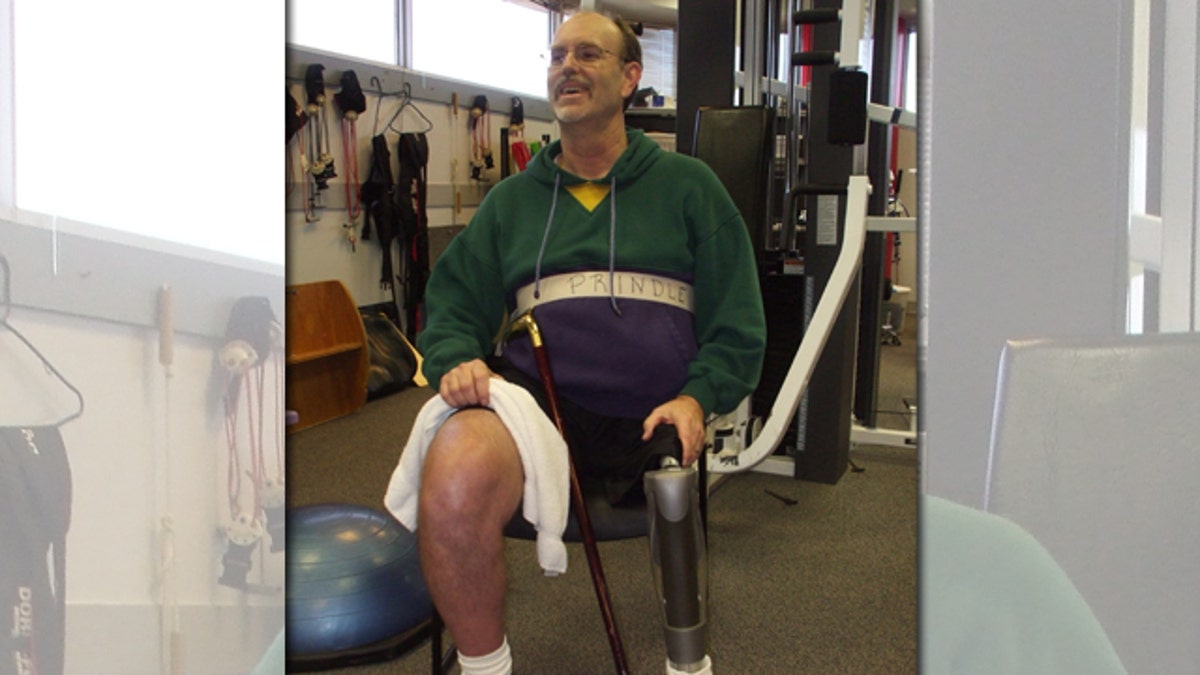
Mike Prindle using his new one-of-a-kind prosthetic leg.
Mike Prindle, a former postal carrier from Baltimore, Ohio, was suffering from a tumor so invasive that doctors told him in order to save his life, they would have to amputate his left leg, part of his spine and the left half of his hip – and maybe even more.
That’s because a dangerous tumor was growing inside his pelvis. It was a type of bone cancer called chondrosarcoma, which typically develops in the pelvis, legs or shoulders of adults over 40.
But physicians at Ohio State’s James Cancer Hospital had another plan for Prindle.
“I did ask the doctors, if you could save my right leg, please, please, at all costs, at least save my right leg,” Prindle said in a news release.
And that’s exactly what they did – a first for U.S. doctors. They took the living bones from Prindle’s amputated leg and used them to rebuild his hip.
“We knew we were going to take his lower leg and amputate it. But the bones and the blood supply to the lower leg were not involved with the tumor.” Dr. Joel Mayerson, of Ohio State’s James Cancer Hospital, said in a news release. “So we decided to make use of those bones.”
It took 37 hours of surgery and hundreds of health care professionals from surgeons to nurses, who kept the bones of the amputated leg alive, and repositioned them in the pelvis and spine, by cutting and reattaching blood vessels and veins.
From there, surgeons placed the thigh bone from Prindle’s amputated leg, between the bottom of his spine and the front of his pelvis. Then, they took one of his shin bones and attached it to his spine to stabilize it. The ultimate goal that doctors were hoping for, was that by using living bones, they would fuse together and thrive.
“He’s already fused,” Dr. Ehud Mendel, a neurologist who worked on the case, said. “We saw it very quickly after the surgery that he fused, because there was still blood supply going to these bones, which promoted bone healing very quickly.”
As a result of this ground-breaking surgery, Prindle is now cancer-free and walks with a state-of-the-art artificial leg that uses tiny computers in the hip and knee joints to help teach him how to walk.
“You learn the leg a little bit at first, then the leg adjusts and starts learning from the patient too,” Prindle said. “So, it’s a two-way process that we’re learning to work together. I’ve gotten to the point where I can almost walk with no assistance at all. Which, in my case, is amazing as it is.”
The surgery was such a success, it was awarded the Reconstructive Surgery Case of the Year, and details have been published by the Journal of Neuroscience: Spine.
